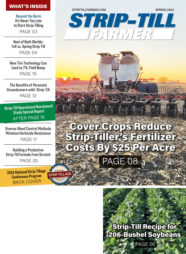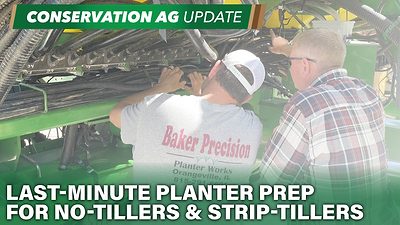While corn and soybeans dominates most strip-till cropping systems, some farmers are experimenting and succeeding with alternative systems.
After nearly a quarter-century of strip-tilling a variety of crops, third-generation farmer Eric Wallendal and his wife, Megan, still view their Grand Marsh, Wis., operation as a work-in-progress.
Their cropping system includes a diverse rotation of forage corn, snap beans, soybeans, peas and alfalfa. They also grow forage corn for a sizeable dairy operation and rent out about 800 acres for potatoes.
All of their strip-tilled acres are under center-pivot irrigation and in 2014, they spring strip-tilled 2,000 acres of soybeans, forage corn and snap beans.
During a classroom session on August 6, the Wallendals will share how they’ve incorporated precision farming practices, including variable-rate irrigation and soil moisture probes to record organic matter, pH levels and water-holding capacity in their sandy topsoils.
They will also discuss current and future use of unmanned aerial vehicles, NDVI imagery data and variable-rate spreading/fertigation to boost strip-till productivity.
For more information and a complete agenda of this year’s event, visit www.striptillconference.com.







Post a comment
Report Abusive Comment